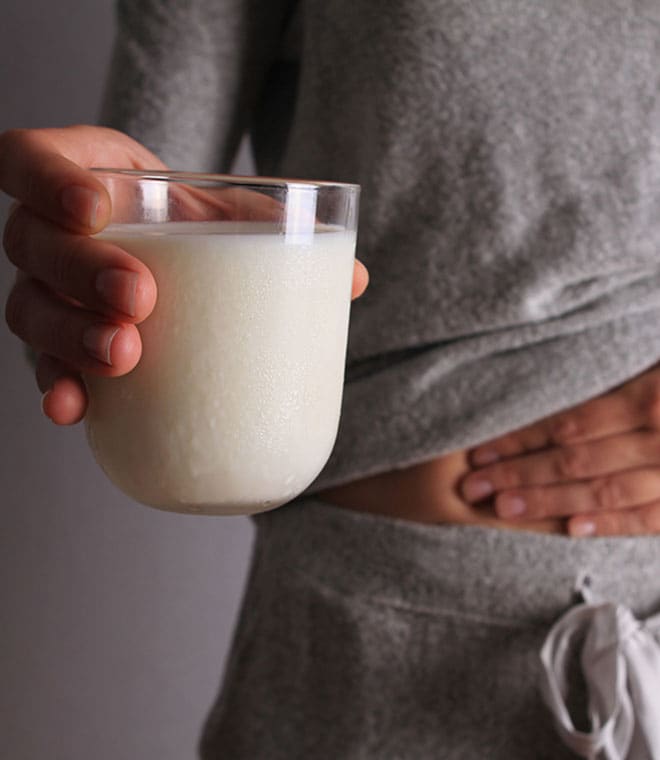
Buying Guides
Constipation relief: A guide to OTC laxatives and other options
By Benjamin Renelus, MD, Gastroenterologist Jun 25, 2024 • 9 min
If you experience occasional mild to moderate constipation, over-the-counter constipation relief products can help support regularity. There are many options to choose from, including supplements, laxatives, stool softeners, enemas and suppositories. Be sure to talk to your healthcare provider about which solutions are right for you.
Fiber supplements
Sometimes called bulk-forming laxatives, oral fiber supplements add insoluble fiber to stool, helping it absorb fluid. As a result, stools become larger and softer, encouraging the bowel to contract normally and push the waste through the digestive tract and out of the body, alleviating constipation.
Benefits and usage
Generally considered the gentlest over-the-counter remedy for constipation, fiber supplements are often the first products that healthcare providers recommend. For many people, it’s safe to take fiber supplements on a daily basis to support regularity. Fiber supplements may also serve as food for beneficial microorganisms in the gut, promoting overall digestive health.
Fiber supplements come in various forms, including tablets, capsules and powders that can be mixed with water and other beverages.
Side effects and risks
Some people may develop gas and bloating from taking fiber supplements, especially when they first begin taking them. People with Crohn’s disease or a blocked bowel and individuals who take medications for diabetes may not be able to safely use bulk-forming laxatives.
Drinking plenty of water is important when taking fiber supplements since these products may worsen constipation without adequate fluid intake.
Stool softeners
Also known as emollient laxatives, stool softeners add water to stool, softening it and making it easier to pass. Stool softeners work by reducing the surface tension of the stool, allowing water and fat incorporation. However, studies suggest stool softeners may not be as effective as once proclaimed. Docusate is the most common over-the-counter stool softener and is sold under the brand names Colace, Correctol, Peri-Colace and Surfak.
Benefits and usage
When fiber supplements alone aren’t enough to address constipation, healthcare providers may recommend stool softeners due to their gentle actions. They’re available in pill, liquid and syrup forms.
Side effects and risks
Side effects are less common with stool softeners than with other types of laxatives. However, they can cause symptoms, such as cramping, nausea, diarrhea and throat irritation.
Laxatives
Generally speaking, laxatives are medications that stimulate bowel movements to ease constipation. There are two main kinds: stimulant laxatives and osmotic laxatives. Each type works differently and has its own advantages and disadvantages.
Osmotic laxatives
Taken orally, osmotic laxatives draw fluid into the intestines, softening stool and making it easier to pass. Common osmotic laxatives include:
- Magnesium citrate
- Magnesium hydroxide (Phillips’ Milk of Magnesia, Dulcolax Liquid)
- Polyethylene glycol (MiraLAX)
- Sodium phosphate (Fleet Phospho-Soda)
Benefits and usage
Healthcare providers may recommend osmotic laxatives when stool softeners and fiber supplements don’t adequately address constipation. These medications are gentler than stimulant laxatives, and they’re easy to take since most come in liquid or powder forms.
Side effects and risks
Cramping, diarrhea, nausea, gas and bloating are the most common side effects of osmotic laxatives. Some types may also cause increased thirst. People with kidney or heart problems may not be able to safely take certain osmotic laxatives. When taken for long periods of time, osmotic laxatives can lead to electrolyte imbalances, so healthcare providers may recommend using them for no longer than one week.
Stimulant laxatives
Oral stimulant laxatives act on the nerves that control bowel muscles, causing contractions that move stool out of the colon. These medications include:
- Bisacodyl (Correctol, Dulcolax, Ex-Lax Ultra)
- Casanthranol (Colace)
- Cascara
- Senna (Ex-Lax, Senokot)
Benefits and usage
Often considered the most aggressive type of over-the-counter laxative, stimulant laxatives are typically used only when other over-the-counter fiber supplements, stool softeners and osmotic laxatives fail to fully address symptoms. Stimulant laxatives typically come in pill form for ease of use, and they tend to work quickly.
Side effects and risks
Due to their actions, stimulant laxatives may cause side effects like diarrhea, abdominal cramping, nausea or belching. Senna and cascara laxatives may also temporarily change the color of urine.
When taken for prolonged periods, stimulant laxatives may reduce bowel muscle tone, making it difficult for people to pass stool without the medication. Consequently, healthcare providers normally recommend taking them only for a few days.
Enemas
Performed at home with a kit, enemas involve injecting fluid into the colon through the rectum to cause a bowel movement. There are a few types of enemas available, and each has a different method of action:
- Sodium phosphate enemas draw water into the colon to quickly stimulate bowel movements
- Glycerin enemas pull water into stool, making it easier to pass
- Bisacodyl enemas work like stimulant laxatives, triggering bowel muscle contractions to move stool out of the body
- Mineral oil enemas lubricate the colon and rectum to help stool slide out more easily
Benefits and usage
Healthcare providers may recommend enemas when oral constipation relief products don’t work. They may also be an option for those who are unable to take oral laxatives and fiber supplements.
Side effects and risks
Using an enema may cause discomfort, especially if the fluid is too cold or too hot. People with hemorrhoids or rectal irritation are more likely to experience discomfort. Cramping and diarrhea may occur after using an enema.
When performed incorrectly, an enema can cause injury to the rectum or colon. Additionally, it can introduce bacteria into the digestive tract, leading to an infection. Follow the usage directions carefully to reduce these risks.
Because enemas can weaken bowel muscle tone and make it more difficult to pass stool, they should only be used occasionally, when recommended by a healthcare provider. Sodium phosphate enemas can lead to electrolyte imbalances and generally aren’t safe for people with chronic kidney disease.
Suppositories
Suppositories are small tube-shaped pellets that are inserted into the rectum for constipation relief. Once in place, they melt, releasing medication that acts directly on the colon and stool. There are three main types of suppositories:
- Osmotic laxative suppositories work by drawing water into the colon
- Stimulant laxative suppositories trigger muscle contractions to push stool out of the colon
- Lubricant laxative suppositories lubricate the colon to help stool move more easily
Benefits and usage
Like enemas, suppositories are typically recommended when other types of over-the-counter products don’t relieve constipation. Suppositories are easier to use than enemas, and they’re less likely to cause injury since they usually don’t require inserting a tube, nozzle or syringe.
Side effects and risks
Diarrhea, cramping and rectal irritation are the most common side effects of suppositories. To avoid complications, healthcare providers usually advise against using them for extended periods of time.
Published June 2024.
Sources:
- https://www.ncbi.nlm.nih.gov/books/NBK537246/
- https://my.clevelandclinic.org/health/diseases/4059-constipation
- https://www.mayoclinic.org/diseases-conditions/constipation/diagnosis-treatment/drc-20354259
- https://my.clevelandclinic.org/health/treatments/enema
- https://www.mayoclinic.org/healthy-lifestyle/nutrition-and-healthy-eating/expert-answers/fiber-supplements/faq-20058513
- https://my.clevelandclinic.org/health/drugs/23729-glycerin-rectal-suppositories
- https://today.duke.edu/2022/07/it-doesn%E2%80%99t-matter-much-which-fiber-you-choose-%E2%80%93-just-get-more-fiber
- https://my.clevelandclinic.org/health/treatments/25121-laxatives
- https://familydoctor.org/laxatives-otc-products-for-constipation/
- https://docs.google.com/document/d/1B9SnaT_zbgtSfeZOIwCfuLBeZmLBLh_lbAcnvsThBKE/edit?pli=1
- https://www.health.harvard.edu/diseases-and-conditions/dont-bomb-the-bowel-with-laxatives
- https://www.mayoclinic.org/diseases-conditions/constipation/in-depth/laxatives/ART-20045906?p=1
- https://my.clevelandclinic.org/health/drugs/23274-stool-softener
- https://medlineplus.gov/druginfo/meds/a601113.html
- https://www.niddk.nih.gov/health-information/digestive-diseases/constipation/treatment



